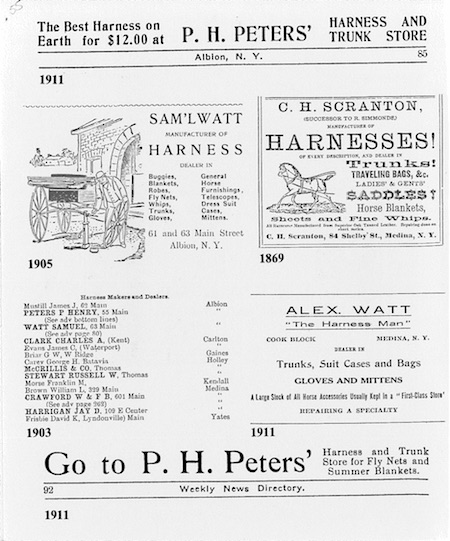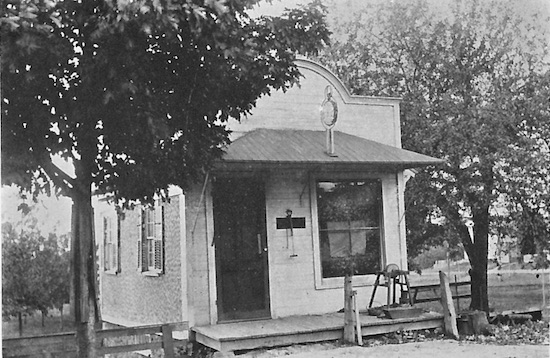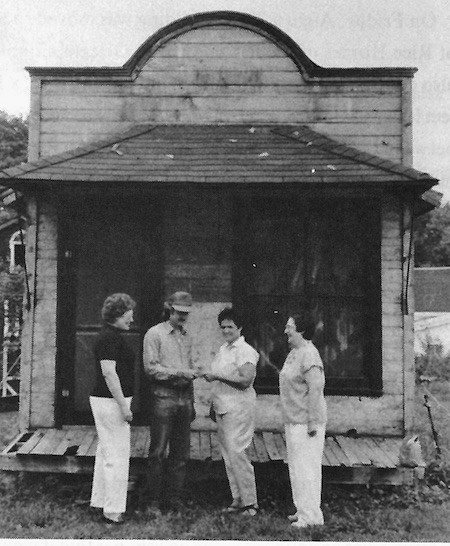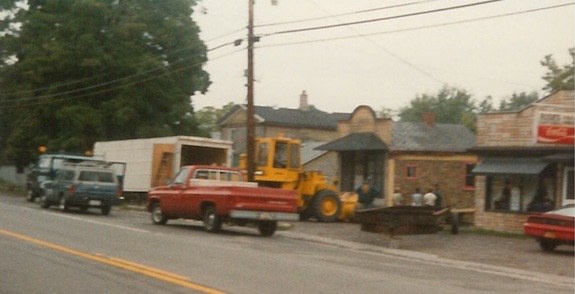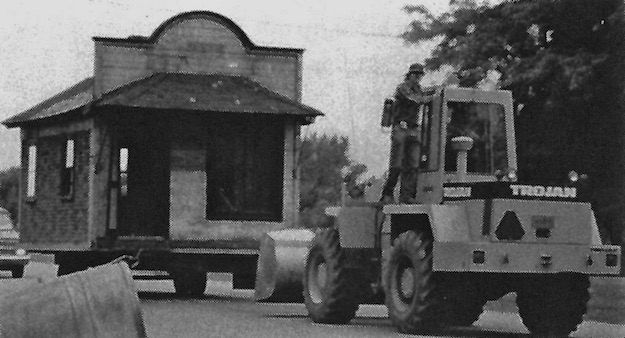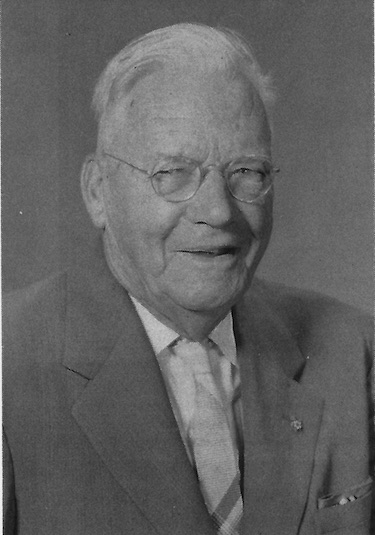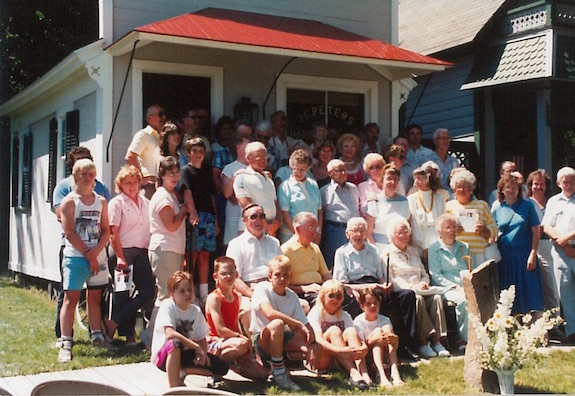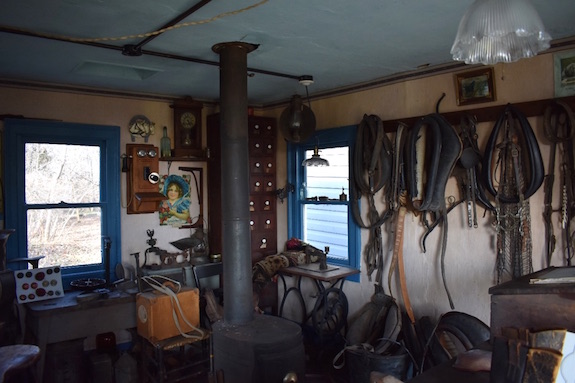Historic Childs: Harness Shop, relocated to Cobblestone Museum, showcases skilled trade from another era
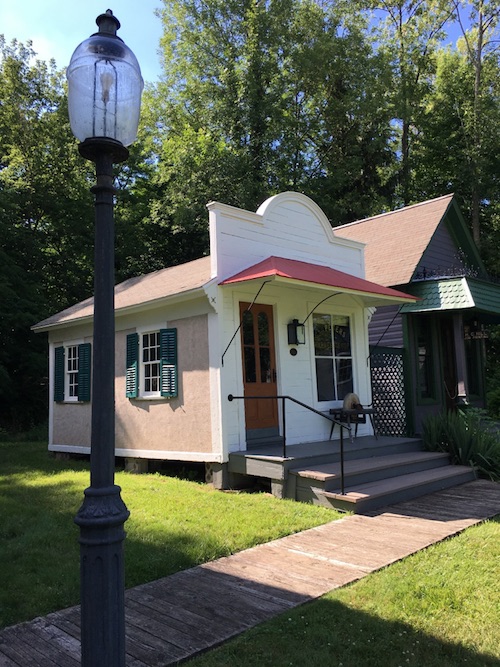
Photos courtesy of the Cobblestone Museum: The Harness Shop was moved to the Cobblestone Museum grounds on Route 98 in 1987. Several structures have been relocated and preserved at the museum.
(Editor’s Note: This is the 12th article in a series about historic Childs in the Town of Gaines. The hamlet of Childs lies just north of Albion at the intersection of Routes 104 and 98. In 2019, Childs was selected to be on the Landmark Society of Western New York’s “Five to Revive” list. In 1993, the federal U.S. Department of the Interior declared the Cobblestone Museum in Childs a National Historic Landmark, the first site in Orleans County with that distinction.)
By Doug Farley, Cobblestone Museum Director
In the 1800s, before the advent of the horseless carriage, it was very common to find one or more harness shops in every community as shown above in the list of harness businesses in Orleans County.
The typical harness maker could reproduce over 50 different leather goods used to make a horse’s harness, any of which could break down due to heavy use and weathering.
The typical harness shop also carried metal fasteners for harnesses, currycombs, lap robes, harness oil, gloves, whips, ointments and much more.
Harness maker P. Henry Peters is shown here at the entrance of his harness store in Albion. A sampling of the numerous types of leather goods he produced is seen in the store windows and also on the life-sized horse mannequin he moved outdoors in fair weather.
The Hamlet of Childs is now home to the J. G. Peters Harness Shop, a building which was built by Starr Chester in 1838 in the Town of Gaines. It originally was used as a shoe store until Chester’s death in 1880. The next owner, Gates Knickerbocker, purchased the building for $30 and moved it to another location in Gaines where it served as a jewelry and clock repair business until his death in 1914.
The photo above depicts the Knickerbocker clock repair store in the late 1800s. A series of owners used the building for other purposes including a gun repair shop, paint shop, cycle depot and as a rental property in the mid-1900s.
The little shop passed to the Cobblestone Society in 1987 when owner Rose Welles, notified Cobblestone Museum director C. W. Lattin that she would donate the building to the Cobblestone Museum complex. Shown above (left) is Delia Robinson, Town of Gaines Historian; C. W. Bill Lattin, Rose Welles, and Janice Thaine, Gaines Deputy Historian.
In more recent years, the little shop had been used as living quarters in connection with the Chatterbox Restaurant located next door. Here we see the building in 1987 as it is being prepared to be moved to the Hamlet of Childs.
The building was moved intact, one mile down Ridge Road, to the Cobblestone Museum campus on August 28, 1987 through courtesies performed by Rice Homes of Barre Center, the Orleans County Sheriff’s Department and the Town of Gaines.
The Cobblestone Museum accepted the donation of the building with a plan to relocate its own collection of harness making equipment from the lower level of its Cobblestone Church where it was displayed. The leatherworking tools had been gifted to the museum in 1963 from the estate of John G. Peters.
Peters was born on July 4, 1877 and served a three-year apprenticeship under Reuben Pridmore, harness maker, in Albion. In 1909, Peters opened a harness shop of his own in Lyndonville. In 1918, Mr. Peters “saw the handwriting on the wall,” and knew tractors were taking over for horses.
He decided to take up shoe repair to earn his livelihood when the harness business became a thing of the past. Following Peters’ death, his family donated his entire collection of artifacts associated with his business to the Cobblestone Museum.
On July 9, 1989 the building was dedicated on the Cobblestone Museum campus as the J. G. Peters Harness Shop. The building was fully restored to house the Peters Collection. Over 50 members of the Peters family attended the celebration with a full family reunion, including a group photo in front of the restored harness shop.
There were innumerable men such as John Peters who manufactured and repaired harnesses around the turn of the 20th century. The J.G. Peters Harness shop serves today as a memorial not just to one man, but to an entire trade. Peters represents the countless craftsmen who plied their trade for hundreds of years, providing needed and valuable services to their communities.






























